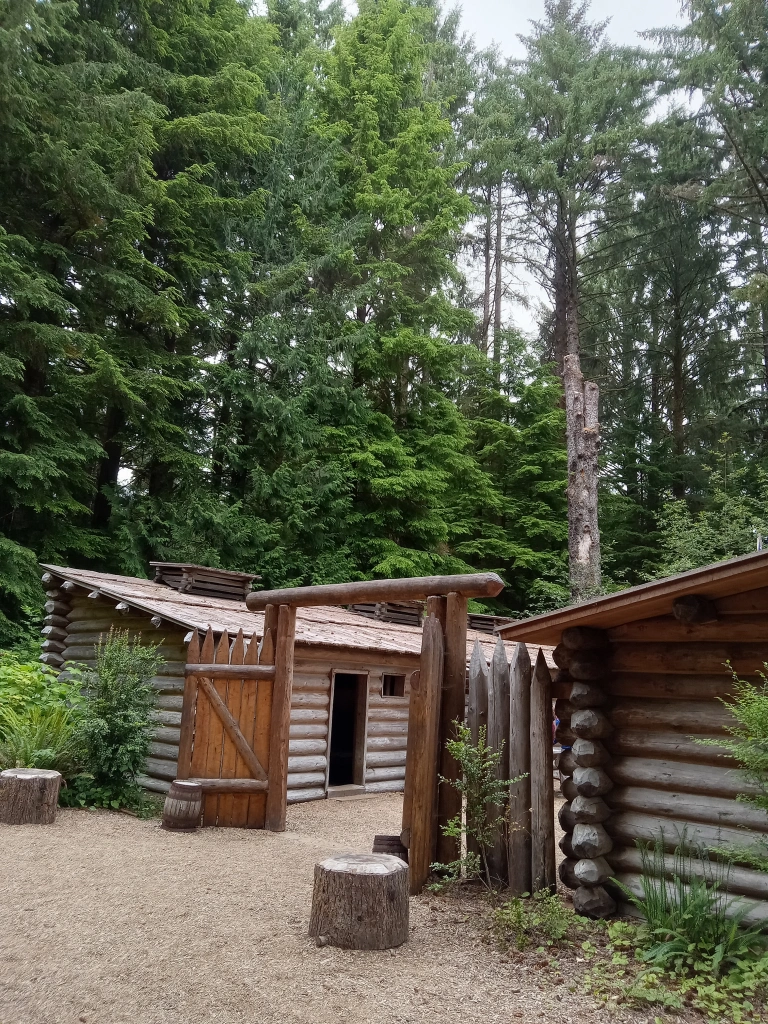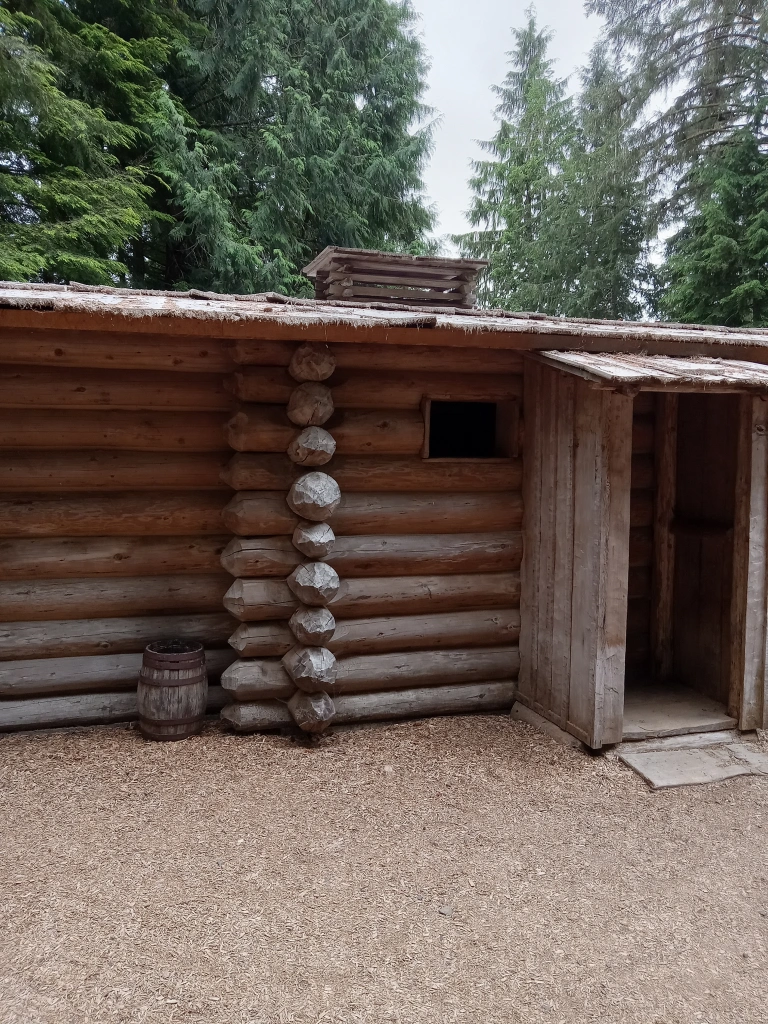Nothing conjures the tastes and smells of the Christmas season better than gingerbread. We delight in gingerbread cookies, gingerbread spices, and gingerbread houses.
Not surprisingly, there have been many variations of gingerbread throughout the ages. In the earliest versions, gingibrati was primarily medicinal, and sometimes called for parsnips. The gingerbread we now recognize has gone through great metamorphosis, though in any given age, multiple versions of gingerbread might be known.
Version 1:
By medieval times gingerbread was a sweet dish made from breadcrumbs, mixed with spices and infused with warm honey, then smashed into the form of a cake. Variations of this type of gingerbread lasted well into the colonial era. (At least four such recipes are included in Martha Washington’s Booke of Cookery.)
The earliest recipe for this medieval gingerbread that I’ve found is from the Curye on Inglysch, Section V, which is a miscellaneous collection of recipes from around the 14th century.
To make gingerbread. Take goode honye and clarifyie it on the fere, & take fayre paynemayn or wastrel brede and grate it, & caste it into the boylynge hony, & stere it well togyder faste with a skylse that it bren not to the vessel. & thanne take it doun and put therein ginger, longe pepere & saunders, & tempere it up with thine handles; & than put hem to a flatt boyste and strawe theron sugar, & pick therin clowes round aboute by the egge and in the midas, yf it plece you, &c. (Curye on Inglysch, Sloane 121)
Interestingly enough, the recipe immediately preceding this one for making gingerbread, calls for only honey and spices and would result in a sort of ginger candy like a ginger chew or ginger drop. Not a bread or cake at all.
For modernizing this recipe, I substituted allspice for saunders (sandalwood). Also instead of placing whole cloves on the edges and middle, I used ground cloves.
Version 2: Fast forward a couple of centuries.
Gingerbread in many shapes became popular throughout Europe, especially in Germany, where cookies shaped for the various seasons were sold at markets and fairs. Germany is also where the tradition of gingerbread houses developed in the 16th century. The Grimm fairy tale of Hansel and Gretel reflects this idea of a house made of sweets.
Though honey/crumb gingerbread continued in some recipes, eventually flour replaced bread crumbs, and molasses (alternately called treacle) replaced honey. In 1775, Townshend included a couple of recipes for gingerbread, both of which include butter. One also adds eggs. Townshend suggests both of these make a stiff dough, to be rolled out and cut in shapes, or rolled into balls. The result should be very much like a modern gingerbread cookie or molasses crinkle, though he calls them cakes.
To make gingerbread cakes
Take three pounds of flour, one pound of sugar, one pound of butter rubbed in very fine, two ounces of ginger beat fine, a large nutmeg grated, some beaten mace and coriander seeds; then take a pound of treacle, a quarter pint of cream, make them warm together, and make up the bread stiff, roll it out, and make it up into thin cakes, cut hem out with a teacup , or small glass, or roll them round like nu ts, and bake them on tin plates in a slack oven. (Townshend, 266)
Since three pounds of flour is 13 or 14 cups, this makes a very large amount of cookies. The result is a rich, crisp, tender cookie, with a spicy tang, rather like a molasses shortbread.
For modern bakers, I suggest reducing the recipe to one quarter of the original.
Colonial Gingerbread
3 ½ cups flour
¼ c. sugar (I suspect sugar was added because molasses is not as sweet as honey.)
1 t. dried ginger
¼ c. molasses (though today there are some minor differences between treacle and molasses, the words were used nearly interchangeably in the colonial period. Molasses may be safely substituted for treacle.)
½ t. Nutmeg,
¼ t. Mace
¼ t. ground coriander
2 T. cream
Mix the dry ingredients and cut the butter into the mixture. Add the molasses and cream to make a stiff dough. Roll out and cut into shapes, or roll into small balls. Bake at 350 degrees 12-16 minutes.
Version 3: About 20-30 years later
The next innovation was the use of a chemical leavening agent: pearl ash. (See On cooking with Pearl Ash .)
In 1796, Amelia Simmons leaves out the molasses entirely, and uses sugar instead. She calls for great quantities of eggs in some recipes (20 eggs for 4 pounds of flour in her Gingerbread No. 2.) She also includes pearl ash. Her recipes have far fewer spices than some earlier versions. Though called ‘soft gingerbread to be baked in pans”, all 4 of her recipes call for a stiff dough, to be shaped as it pleases. These recipes are the basis for the cookies I discussed in Dead Cakes. By the end of the 18th century Gingerbread was well-known with many varieties, from cookies to cakes, with and without eggs, molasses, and a variety of spices.
Mrs. Child’s recipe from 1833 uses pearl ash for leavening and produces a heavy, sponge-like cake. Adding eggs or a more sour cider would make it a bit lighter. Pearlash requires an acid to make it foam. Apple cider vinegar works well to dissolve it.
“A cake of common gingerbread can be stirred up very quick in the following way. Rub a bit of shortening as big as an egg into a pint of flour; if you use lard, add a little salt; two or three great spoonfuls of ginger; one cup of molasses, one cup and a half of cider, and a great spoonful of dissolved pearlash, put together and poured into the shorted flour while it is foaming; to be put in the oven in a minute. It ought to be just thick enough to pour into the pans with difficulty; if these proportions make it too thin, use less liquid the next time you try. Bake about twenty minutes.” (Child, 70).
My Recipe:
3 c. flour
¼ c. margarine or shortening
1 t. Salt
1 T. ginger (dried, powdered) or 2 T. grated fresh
1 c. cider
1 c. molasses
1 T. pearl ash
½ c. cider vinegar
Mix flour, salt, and ginger. Cut or rub in margarine. Add molasses and cider and mix well. Dissolve the pearl ash in the cider vinegar and immediately add it to the batter (while the pearl ash/vinegar is still foaming.) Pour into a greased 8” or 9“ baking pan. Bake at 350 degrees for about 20 minutes. Test with a toothpick.
Version 4: Mid- 20th century
As I’ve noted before, pearl ash is not the best leavening ingredient because it can leave a bitter taste and does not work well. Baking soda was known by the late 1700’s, but was not in home use until the 1860’s. It quickly replaced potash as more reliable and less likely to produce a bitter taste. Baking powder, which is a mixture of baking soda( an alkaline), cream of tartar ( a an acid), and cornstarch ( a buffer to prevent premature activation), was also developed in the middle of the 19th century. This last version of gingerbread is much more like a modern cake or quick bread: light, fluffy, and delicious. Notice the use of brown sugar along with molasses.
Household Searchlight Recipe Book
- 1 Cup Brown Sugar
- 2 Eggs, Well Beaten
- 1 Cup Sour Milk
- 1 Teaspoon Baking-Soda
- 3 Cups Flour
- 1 Teaspoon Ginger
- ¾ Cup Molasses
- 1 Teaspoon Cinnamon
- ¾ Cup Melted Shortening
- ¼ Teaspoon Salt
Combine eggs, sugar, shortening, and molasses. Sift flour, measure ands sift with baking=soda, and spices. Add alternately with milk to first mixture. Beat until well blended…” (Migliario, et al., 45)
This recipe is modern enough to follow with much interpretation. It calls for a well-oiled pan, but doesn’t say what size. I made 5” x 9” loaf with ⅔ of the batter, and put the rest in a 9” x9” square pan. Bake the square for 30 minutes and the loaf for 40 minutes. Test with a toothpick. Note: to make sour milk, add 1 T. vinegar to 1 c. milk.
Whether you like cookies, or cake, or just like to use gingerbread for building houses, here’s hoping you enjoy the taste of ginger this holiday season. Merry Christmas!
Sources:
Child, Lydia Marie. The American Frugal Housewife. Dedicated to those who are not ashamed of economy. 12th Edition. Boston: Carter, Hendee, and Co. 1833. (First published 1828)
Curye on Inglysch: English Culinary Manuscripts of the Fourteenth Century (Including the “Forme of Cury”) Constance B. Heiatt (Editor), and Sharon Butler (Editor). Oxford University Press; 1st Edition edition, 1985.
Glasse, Hannah. The Art of Cookery Made Plain and Easy: Excelling any Thing of the Kind ever yet published. Alexandria: Cottom and Stewart. 1805. (First Edition publishing in London, 1747. This edition reprint of 1st American Edition, 1805, by Applewood Books, 1997).
—–. Martha Washington’s Booke of Cookery and Booke of Sweetmeats. (A Family Manuscript, Hand written circa 17th century. Transcribed and annotated by Karen Hess, New York: Columbia University Press, 1995).
Migliario,Ita, et al., editors. The Household Searchlight Recipe Book. The Household Magazine. Topeka, Kansas, 1941.
Randolph, Mary. The Virginia Housewife Or, Methodical Cook. Philadelphia: E. H. Butler & Co., 1860. (Facsimile by Dover Publications, 1993, with introduction by Janice Bluestein Longone).
Simmons, Amelia. The First American Cookbook: A Facsimile of “American Cookery,” 1796. Hartford: Hudson and Godwin, 1976. (This facsimile includes a preface by Mary Tolford Wilson, and was first published in 1958, Oxford University Press. This Dover Edition reprint was published 1984.)







































